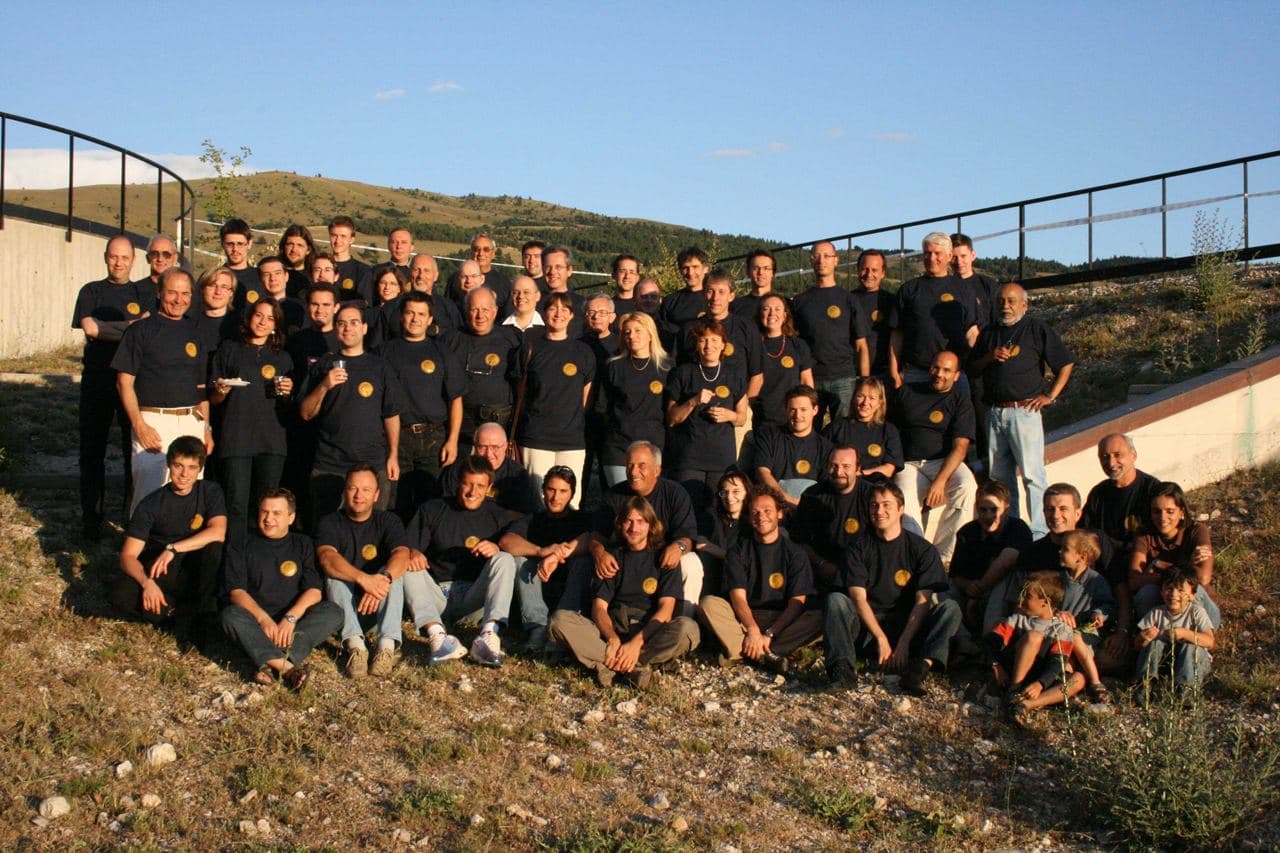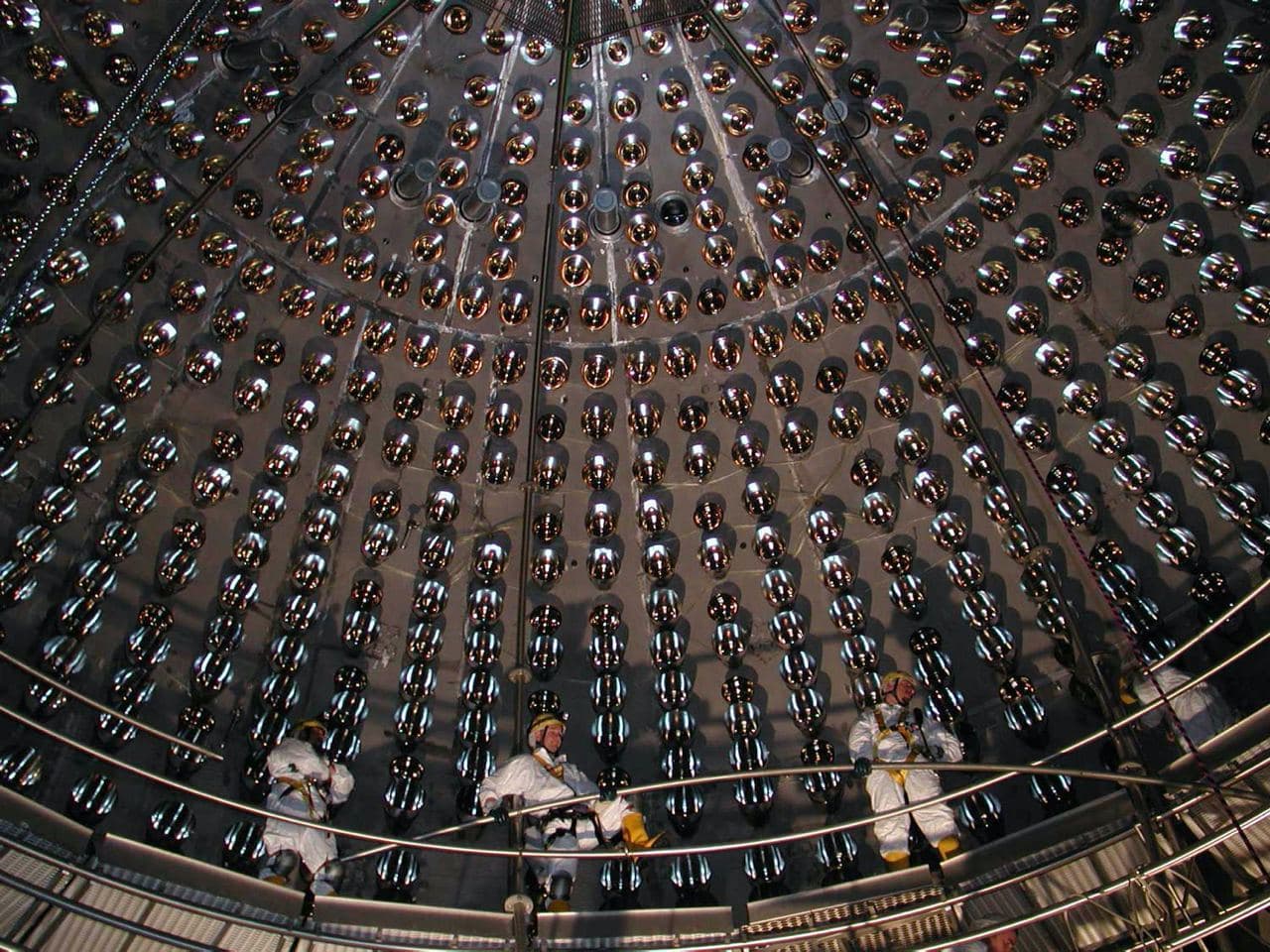A prestigious prize of the European Physical Society was awarded to the Borexino collaboration
Borexino, an international collaboration, was awarded a prestigious Giuseppe and Vanna Cocconi Prize of the European Physics Society in astrophysics and cosmology for breakthrough studies of solar neutrinos providing the only and exhaustive evidence of nuclear fusion reactions in the Sun in the pp-chain and in the CNO cycle.

The Giuseppe and Vanna Cocconi Prize was established by the European Physics Society in 2010 to commemorate the Italian physicists who worked at CERN. The Prize is awarded biennially for outstanding experimental, theoretical or technological contribution to astroparticle physics and cosmology. Individual scientists or scientific teams involved in one or more collaborations can be nominated for the Prize. The Borexino collaboration uniting scientists from Italy, Germany, the USA, France, Russia and Poland was nominated this year.
The Borexino detector, an ultrasensitive tool to study solar neutrinos, was launched in May 2007 and still continues taking unique data. Last year, the collaboration published a paper on discovering neutrinos from the reactions of the CNO cycle in the Sun. The reactions of this cycle contribute only about one per cent to the total solar energy, but the energy of more massive stars is mainly generated in this very cycle. Many of massive stars in the Universe and their rapid evolution make the CNO cycle the main mechanism for conversion of hydrogen into helium in stars. The CNO cycle is well theorized, but until the Borexino results were obtained, there was no experimental evidence of its occuring in the Sun.
“Studying solar neutrinos is of high importance for solar physics and astrophysics”, says the senior researcher of the Dzhelepov Laboratory of Nuclear Problems (JINR) Oleg Smirnov. “To date, the measurements of concentration of elements heavier than hydrogen gained from the spectroscopy of the Sun’s surface contradict helioseismic data. This contradiction constitutes the so-called solar metallicity problem or, in other words, the mystery of the Sun’s chemical composition. The Borexino results correspond to the higher probability of realization of solar models with a high concentration of heavy elements. This is the first indication of this kind in the history of solar neutrino studies. Thus, the Borexino collaboration took the first step towards unveiling the solar metallicity problem”.
The Borexino collaboration involves scientists from Italy, Germany, the USA, France, Russia and Poland. The group from the Dzhelepov Laboratory of Nuclear Problems (JINR) is one of the oldest in the collaboration, participating in the experiment since the project discussion stage in 1991. Along with the JINR scientists, colleagues from the National Research Center “Kurchatov Institute” (NRC KI), working on the site in Moscow and in St. Petersburg at the Petersburg Nuclear Physics Institute of NRC KI, take part in the Borexino project, and from the Skobeltsyn Institute of Nuclear Physics of MSU.
The award ceremony will take place at the conference of the European Physical Society on high-energy physics on 26 July 2021.
 The Borexino collaboration team. Copyright: Borexino collaboration.
The Borexino collaboration team. Copyright: Borexino collaboration.
 Photomultipliers of the Borexino detector on the inner side of the metallic sphere. A cone-shaped light concentrator is installed above each photomultiplier. The open part of the concentrator has a diameter of 50 cm. The yellow truncated cylinders protect the devices from the Earth’s magnetic field. Copyright: Borexino collaboration.
Photomultipliers of the Borexino detector on the inner side of the metallic sphere. A cone-shaped light concentrator is installed above each photomultiplier. The open part of the concentrator has a diameter of 50 cm. The yellow truncated cylinders protect the devices from the Earth’s magnetic field. Copyright: Borexino collaboration.
 Photomultipliers of the Borexino detector on the inner side of the metallic sphere. A cone-shaped light concentrator is installed above each photomultiplier. The open part of the concentrator has a diameter of 50 cm. The yellow truncated cylinders protect the devices from the Earth’s magnetic field. Copyright: Borexino collaboration.
Photomultipliers of the Borexino detector on the inner side of the metallic sphere. A cone-shaped light concentrator is installed above each photomultiplier. The open part of the concentrator has a diameter of 50 cm. The yellow truncated cylinders protect the devices from the Earth’s magnetic field. Copyright: Borexino collaboration.

